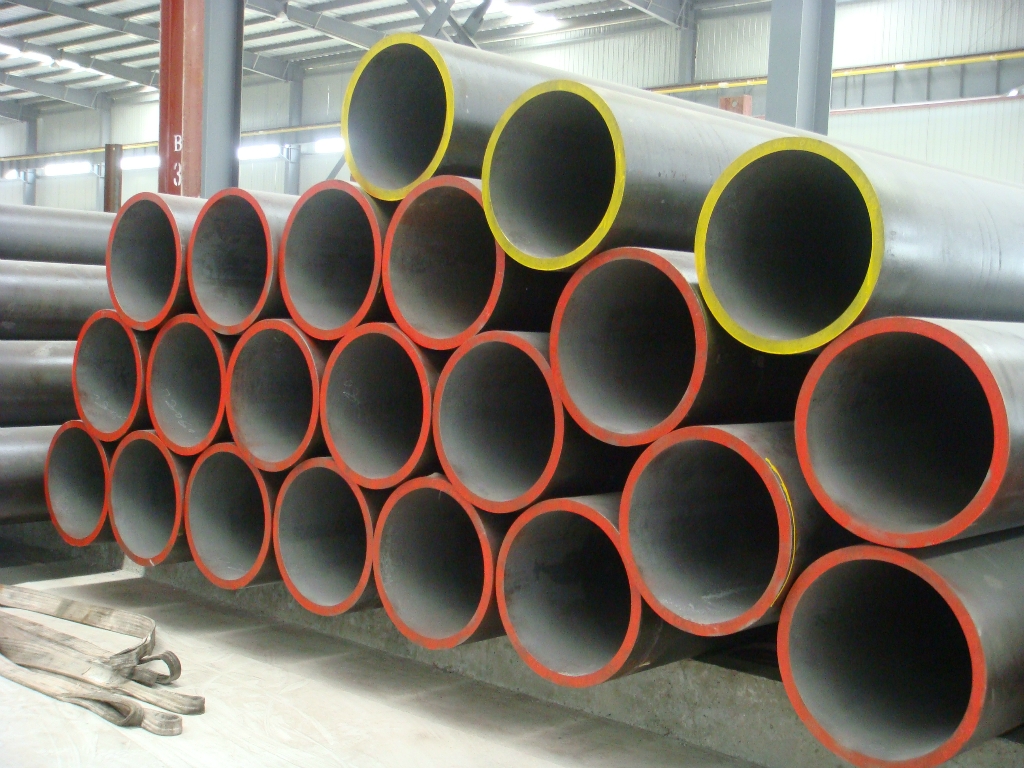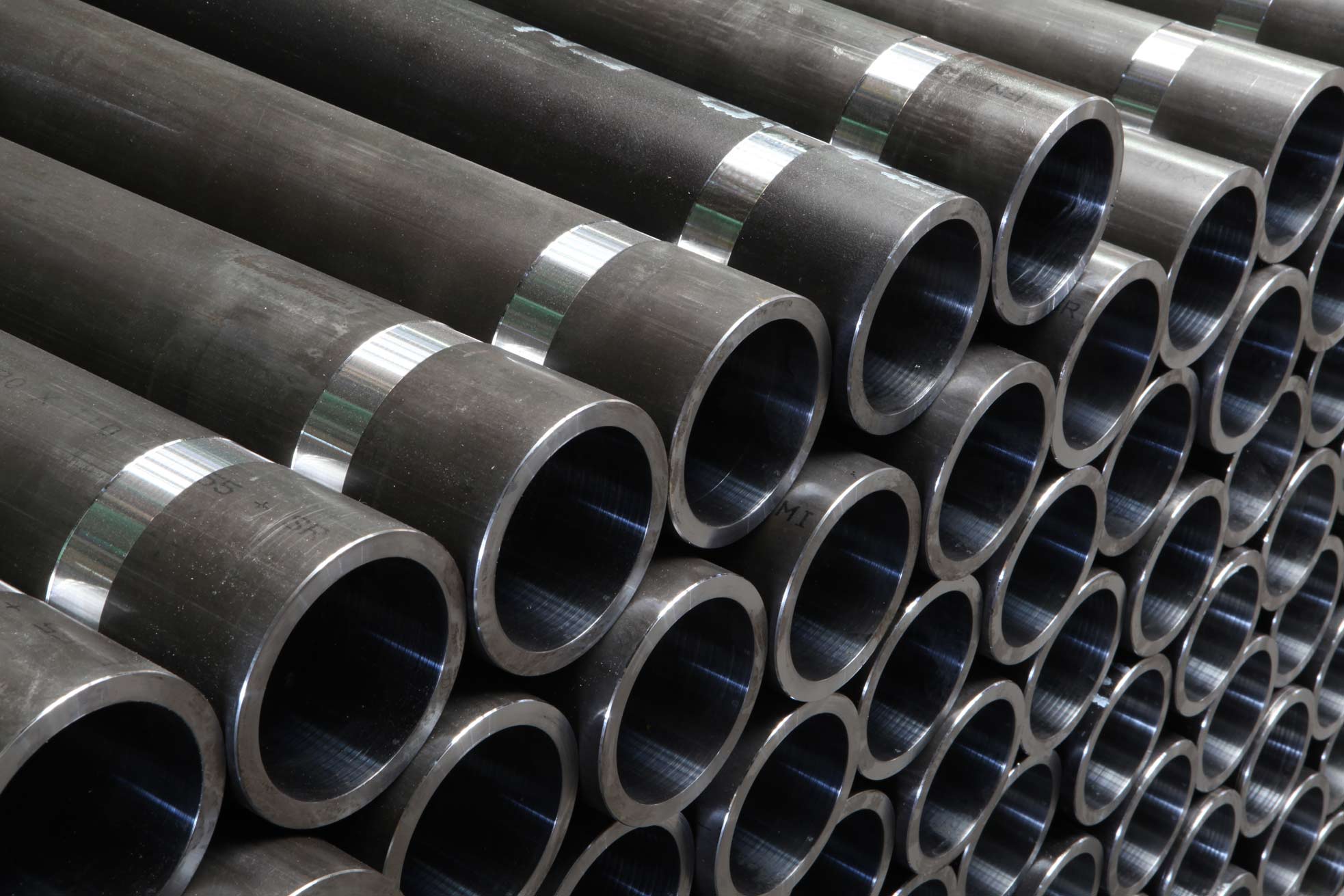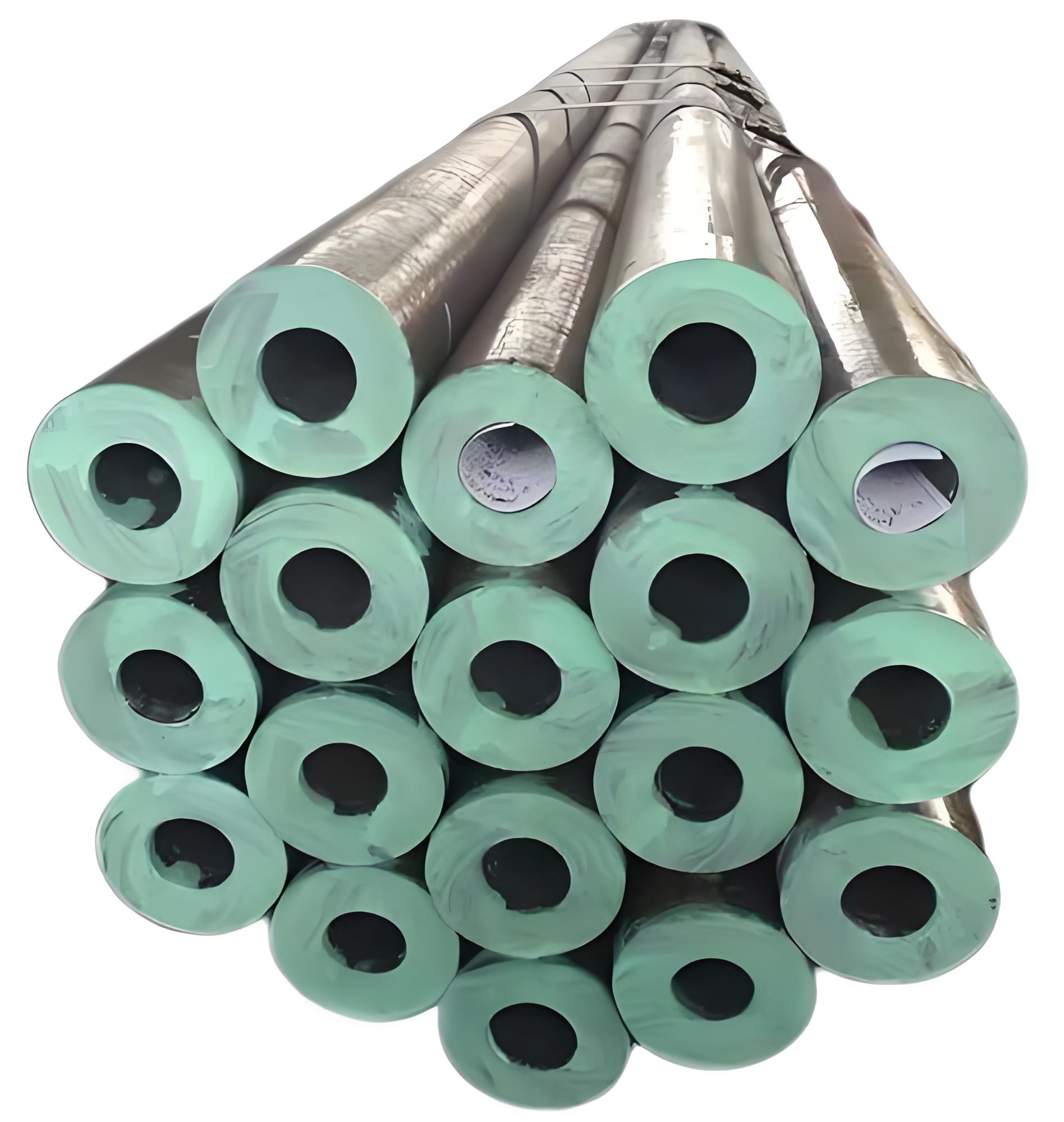ASTM A519 Seamless Steel Pipe | Grade 4130, 4140, 4142, 4145 and 4147

The domain of manufacturing ASTM A519 Seamless Steel Pipe in the venerable Chromium-Molybdenum (Cr-Mo) Alloy Grades—specifically 4130, 4140, 4142, 4145, and 4147—is an undertaking deeply rooted in the requirements of high-performance engineering, representing a commitment to delivering material solutions that are non-negotiable in critical applications where a combination of high strength, superior toughness, excellent fatigue resistance, and predictable response to heat treatment is paramount, making these tubes the fundamental building blocks of industries ranging from aerospace and automotive racing to high-pressure oil and gas drilling equipment. The inherent value of the $\text{41xx}$ series lies in the precise, controlled synergy between the alloying elements—Chromium ($\text{Cr}$) enhancing hardenability and corrosion resistance, and Molybdenum ($\text{Mo}$) improving high-temperature creep strength, overall toughness, and mitigating temper brittleness—which allows the steel to be finely tuned through quenching and tempering ($\text{Q\&T}$) processes to achieve an immense range of mechanical properties, far exceeding those of plain carbon steels. This comprehensive exploration must flow naturally, beginning with the foundational role of the ASTM A519 standard itself, which codifies the quality and manufacturing methods for seamless mechanical tubing, transitioning into a detailed, comparative analysis of the specific chemical nuances and resulting mechanical capabilities of each of the five core grades, meticulously detailing the critical heat treatment requirements that unlock their full potential, and culminating in a full technical specification detailing the dimensional, mechanical, and application specifics that define their irreplaceable role in global high-stress engineering, ensuring a continuous, detailed narrative that captures the full depth and critical nature of this specialized product line.
📜 The Mandate of ASTM A519: Defining Seamless Mechanical Tubing Excellence
The manufacturing of our Cr-Mo alloy pipes is governed by the rigorous requirements of ASTM A519 (Standard Specification for Seamless Carbon and Alloy Steel Mechanical Tubing), a standard that is more than just a set of rules; it is the industry-recognized covenant that guarantees the uniformity, quality, and predictability of the material, establishing the critical boundary conditions for everything from dimensional tolerance and surface finish to the necessary testing frequency, which is essential because these tubes are rarely used as-is, but are precision-machined, heat-treated, and integrated into complex, high-stress assemblies. The very definition of A519 as Seamless Mechanical Tubing underscores its intended use: unlike pressure tubing (A106) or structural tubing (A500), A519 tubes are specifically designed to be highly workable and machinable, forming components like piston rods, hydraulic cylinders, bearing races, and axles, which means the material must be free from the internal longitudinal welds and resulting heat-affected zones (HAZs) that are inherent in welded tubing, as such discontinuities would compromise the integrity during machining or fatigue loading, thus necessitating the piercing and rotary rolling processes used to create a truly seamless product.
A critical aspect of the A519 mandate is the absolute requirement for Chemical Composition Control, which is the foundational element that differentiates the various grades within the $\text{41xx}$ series; the standard requires meticulous ladle analysis and subsequent product analysis to ensure that every element—Carbon ($\text{C}$), Manganese ($\text{Mn}$), Silicon ($\text{Si}$), Phosphorus ($\text{P}$), Sulfur ($\text{S}$), $\text{Cr}$, and $\text{Mo}$—falls within the narrow, prescribed ranges that define the specific grade (4130 through 4147), recognizing that even minor deviations in carbon or molybdenum content can drastically alter the steel’s hardenability, weldability, and ultimate response to the final quenching and tempering treatment, thereby directly affecting the tube’s ability to meet the customer’s specified final hardness and strength requirements, which are often non-negotiable for downhole tools or critical automotive components. Furthermore, the standard dictates the permissible Dimensional Tolerances for the Outer Diameter ($\text{OD}$), Inner Diameter ($\text{ID}$), and Wall Thickness ($\text{WT}$), which are significantly tighter than those for commercial pipe, reflecting the need for precision in subsequent machining operations, ensuring that the tube can be easily chucked, turned, or bored without undue runout or material wastage. This rigorous control, from chemistry to dimension, ensures that when a customer specifies an ASTM A519 4140 seamless tube, they are receiving a product with fully documented, traceable, and predictable mechanical and metallurgical characteristics, a necessity for critical engineering design.
🧪 The Chemical Gradient: Differentiating 4130, 4140, 4142, 4145, and 4147
The numerical progression within the $\text{41xx}$ series—4130, 4140, 4142, 4145, and 4147—is a precise chemical lexicon, primarily dictated by the subtle but critical increase in Carbon Content, which is the single most influential factor determining the steel’s Hardenability and the final attainable strength after the mandatory Quenching and Tempering (Q&T) heat treatment, while maintaining a consistent and optimized baseline of Chromium and Molybdenum for enhanced properties. The four-digit SAE/AISI designation clearly defines this: the ’41’ signifies the Cr-Mo alloy family, while the last two digits approximate the carbon content in hundredths of a percent.
- Grade 4130 (0.28-0.33% C): Often referred to as “Chromoly,” 4130 is the leanest and most ductile of the group, prized for its excellent Weldability due to its lower carbon content, which minimizes the risk of cold cracking in the Heat-Affected Zone ($\text{HAZ}$) during welding. While still capable of high strength after Q&T, its lower hardenability makes it ideal for thinner-walled tubes and structures where welding is a primary joining method, such as aircraft fuselages, bicycle frames, and roll cages, offering an optimal balance of strength, weight, and ease of fabrication.
- Grade 4140 (0.38-0.43% C): The workhorse of the series and arguably the most widely used alloy steel globally, 4140 provides a significant increase in strength and hardness potential over 4130 due to its near $0.40\%$ carbon content, offering the best overall combination of strength, toughness, and fatigue resistance for general-purpose high-stress applications; its higher hardenability makes it suitable for larger cross-sections where through-hardening is required, such as heavy shafts, pressure vessels, and high-strength fasteners, though its weldability requires stricter pre- and post-weld thermal controls.
- Grades 4142, 4145, and 4147 (0.40-0.45% C, 0.43-0.48% C, 0.45-0.50% C): These grades represent a progressive, specialized increase in carbon content, which pushes the attainable hardness and wear resistance to maximum levels, making them essential for applications requiring exceptional surface hardness and wear resistance, often at the expense of slight reductions in impact toughness and weldability; they are particularly favored in the Oilfield and Downhole Drilling Sector for components like drill collars, couplings, and pump shafts, where the highest possible strength and resistance to abrasive wear are non-negotiable, with the slightly higher carbon content ensuring a deeper and more effective through-hardening on the thick-walled tubes often encountered in this severe-service environment, demonstrating a clear, linear relationship where increased carbon content delivers enhanced strength and wear resistance, demanding a precise, application-specific selection.
The consistency of the $\text{Cr}$ and $\text{Mo}$ content across these grades (typically $\text{Cr}$ $0.80-1.10\%$ and $\text{Mo}$ $0.15-0.25\%$) is the metallurgical anchor, ensuring that all five grades share the foundational characteristic of being highly responsive to heat treatment and possessing superior tempering stability compared to lower alloyed steels, which is the core reason they are specified under A519 for mechanical applications.
🔥 Heat Treatment Requirements: Unlocking the Performance Potential
The exceptional mechanical properties that define the $\text{41xx}$ series Cr-Mo tubes are not inherent in the as-received condition; they are Unlocked only through the precise and often mandatory application of Heat Treatment Requirements, a critical manufacturing or end-user step that transforms the tubes into their final high-strength, high-toughness state, and the control of this process is governed by the alloy’s specific chemical composition. The most critical process for the 4140, 4142, 4145, and 4147 grades is Quenching and Tempering (Q&T), which is typically specified to achieve a predefined final hardness (e.g., $28-32 \text{ HRC}$ or specific yield strength levels):
- Austenitizing (Quenching): The tube is first heated to a temperature above the upper critical transformation temperature ($\text{AC}3$), typically between $840^{\circ}\text{C}$ and $870^{\circ}\text{C}$, for a time sufficient to ensure the entire cross-section is transformed into a homogenous austenitic structure, fully dissolving all carbides and preparing the material for hardening. This is immediately followed by a rapid quench—usually in oil or agitated polymer solution—which quickly cools the material, transforming the austenite into a hard, brittle Martensitic microstructure, locking in the high strength potential.
- Tempering: Because the martensitic structure is too brittle for mechanical applications, the quenched tube is then reheated to a specific, lower temperature (the tempering temperature, usually between $500^{\circ}\text{C}$ and $650^{\circ}\text{C}$) and held for a set time, a process that relieves internal stresses, converts some martensite into fine carbides within a tempered matrix, and, most importantly, precisely adjusts the material’s final strength and toughness to meet the target specification, with the specific tempering temperature being the primary control lever that dictates the final hardness, thereby requiring rigorous temperature control and uniformity throughout the tempering furnace to ensure consistent properties across the entire tube length and batch.
For the lower-carbon 4130, while Q&T is common, it is also frequently used in the Normalized condition, where the tube is heated and cooled in air, providing a good balance of strength and ductility without the complexity and cost of a full Q&T cycle, making it ideal for structural applications. Furthermore, all tubes supplied under A519 will often receive a final Stress Relief Anneal after cold working (if applicable) or before the final machining stages to minimize residual stresses that could otherwise lead to distortion or cracking during subsequent processing or operational fatigue, underscoring that the control of the thermal history is not just a regulatory compliance matter, but the essential mechanism by which the full mechanical performance and dimensional stability of these critical alloy tubes are guaranteed.
📏 Dimensions, Sizes, and Testing: Compliance and Verification
The utility of A519 seamless pipe is inherently tied to its reliable dimensional accuracy and the robust verification process that ensures every length meets the demanding mechanical criteria, transitioning from a general steel product to a certified, precision engineering component ready for immediate integration into high-stress systems. Our production capabilities cover a broad spectrum of sizes necessary for mechanical applications, with Outer Diameters ($\text{OD}$) typically ranging from $1/2\text{ inch}$ up to $12 \text{ inches}$ (and beyond for specialized tooling), and corresponding Wall Thicknesses ($\text{WT}$) tailored to the specific application pressure and load-bearing requirements, often utilizing the standard schedules (e.g., Sch. 40, Sch. 80, Sch. 160) or custom dimensions dictated by the hydraulic cylinder or tooling design. The A519 standard dictates specific, strict Dimensional Tolerances that must be met, generally tighter than those found in A53/A106; for instance, the $\text{OD}$ tolerance for cold-drawn tubing is often specified to very tight limits (e.g., $\pm 0.010\text{ inch}$ or less for smaller sizes), ensuring the tube can be precisely machined to a finished component size with minimal stock removal and material waste, a critical cost factor in high-value alloys.
The mechanical assurance is provided by mandatory, periodic Tensile Testing, where test coupons are cut from the finished, heat-treated pipe and subjected to controlled tension until failure, yielding quantitative values for Tensile Strength, Yield Strength, and Elongation that must meet or exceed the minimum values specified by the governing standard or the customer’s specific material specification for the heat treatment condition; the high strengths achievable in the $\text{41xx}$ series after Q&T are remarkable, often exceeding $1,000 \text{ MPa}$ ($145 \text{ ksi}$) in ultimate tensile strength, confirming the material’s suitability for high-load applications. Furthermore, the integrity of the seamless pipe’s body must be verified by Non-Destructive Testing (NDT): the A519 standard commonly requires either Hydrostatic Testing or a suitable NDT method, such as Non-Destructive Electric Test (NDE)—including $\text{Eddy Current}$ or Ultrasonic Testing (UT)—to ensure the pipe is free from harmful internal or external discontinuities, especially crucial for thick-walled sections used in downhole tools where any flaw could lead to catastrophic failure under immense internal or external pressure and cyclic stress. This rigorous, documented verification process culminates in the issuance of the Material Test Report (MTR), providing the certified chemical analysis, heat treatment documentation, and verified mechanical test results, which acts as the official, traceable guarantee of quality and compliance for every foot of A519 Cr-Mo tubing shipped.
🌍 Applications and Features: The Indispensable Role in High-Stress Environments
The unique combination of high strength, superior toughness, and excellent responsiveness to heat treatment makes the ASTM A519 $\text{41xx}$ series seamless pipes—particularly grades 4130 through 4147—indispensable to industries that operate under the most severe conditions of high pressure, high load, and cyclic fatigue, where component failure is simply not an option, defining the tubes as essential assets in global high-stakes engineering. The unifying Key Feature across all five grades is their High Strength-to-Weight Ratio after Q&T, which allows for the design of lighter, yet stronger, components compared to conventional steels, a principle that drives their widespread use in Aerospace and Automotive applications, where 4130 tubing is the primary material for lightweight structural components, roll cages, engine mounts, and critical chassis members, utilizing its excellent weldability for complex fabrication.
The higher-carbon grades, 4140, 4142, 4145, and 4147, dominate the Oil and Gas Industry, specifically in the manufacture of Downhole Drilling Tools and Subsea Equipment, where the high compressive and tensile stresses, combined with exposure to corrosive fluids, mandate the highest mechanical integrity; these tubes are machined into critical components like drill collars, pump shafts, stabilizers, and hydraulic cylinder barrels for $\text{BOP}$ (Blowout Preventer) systems, utilizing the enhanced hardenability of 4145 and 4147 to achieve the necessary high yield strength and wear resistance over large cross-sections. In the Heavy Equipment and Industrial Hydraulics sector, 4140 and 4145 tubes are the material of choice for High-Pressure Hydraulic Cylinder Barrels and piston rods, offering the fatigue resistance and strength required to withstand millions of cycles of high-pressure fluid operation in excavators, cranes, and injection molding machinery, often supplied in the stress-relieved condition for subsequent precision honing. Furthermore, the excellent Wear Resistance and ability to be flame- or induction-hardened make them suitable for machinery parts like bushings, gears, and bearings, demonstrating their versatility as a multi-functional mechanical alloy. The diverse application spectrum—from the thin-walled, weldable structures of aviation to the massive, high-strength pressure vessels of deep-sea drilling—underscores that the $\text{41xx}$ seamless pipe is a high-performance material tailored for predictable, reliable operation under the most rigorous conditions imaginable, a testament to the metallurgical efficiency of the chromium-molybdenum alloying system.
📝 Consolidated Technical Reference Tables for ASTM A519 Seamless Cr-Mo Pipe
The following tables provide a structured overview of the material specifications, chemical compositions, and mechanical requirements for the ASTM A519 Cr-Mo alloy grades 4130 through 4147, essential for technical reference and procurement.
Table 1: Material Specification and Designation
| Parameter | Specification | Description |
| Standard | ASTM A519/A519M | Seamless Carbon and Alloy Steel Mechanical Tubing |
| Material Type | Chromium-Molybdenum Alloy Steel (Cr-Mo) | SAE/AISI $\text{41xx}$ Series |
| Process | Seamless | Manufactured by piercing a solid billet; free from welds |
| Condition | As-Rolled, Normalized (N), Annealed (A), Quenched and Tempered (Q&T) | Specified per end-use requirement and final desired strength |
| OD Range (Typical) | $1/2 \text{ inch}$ to $12 \text{ inches}$ (Custom larger sizes available) | Precision tolerances for subsequent machining |
| Application Focus | High-Stress, Fatigue-Loaded, High-Pressure Components | Downhole Tools, Hydraulic Cylinders, Structural Racing Frames |
Table 2: Chemical Composition (Weight %)
| Grade | C (Range) | Mn (Range) | Si (Range) | Cr (Range) | Mo (Range) | P (Max) | S (Max) |
| 4130 | $0.28 – 0.33$ | $0.40 – 0.60$ | $0.15 – 0.35$ | $0.80 – 1.10$ | $0.15 – 0.25$ | $0.035$ | $0.040$ |
| 4140 | $0.38 – 0.43$ | $0.75 – 1.00$ | $0.15 – 0.35$ | $0.80 – 1.10$ | $0.15 – 0.25$ | $0.035$ | $0.040$ |
| 4142 | $0.40 – 0.45$ | $0.75 – 1.00$ | $0.15 – 0.35$ | $0.80 – 1.10$ | $0.15 – 0.25$ | $0.035$ | $0.040$ |
| 4145 | $0.43 – 0.48$ | $0.75 – 1.00$ | $0.15 – 0.35$ | $0.80 – 1.10$ | $0.15 – 0.25$ | $0.035$ | $0.040$ |
| 4147 | $0.45 – 0.50$ | $0.75 – 1.00$ | $0.15 – 0.35$ | $0.80 – 1.10$ | $0.15 – 0.25$ | $0.035$ | $0.040$ |
Note: The primary difference is the carbon content, which dictates the maximum attainable hardness and strength after Quenching and Tempering (Q&T).
Table 3: Heat Treatment and Tensile Requirements (Minimum, Example)
| Grade | Heat Treatment Condition | Min. Yield Strength | Min. Tensile Strength | Min. Elongation (A%) | Target Hardness (HRC) |
| 4130 | Normalized (N) | $415 \text{ MPa}$ ($60 \text{ ksi}$) | $655 \text{ MPa}$ ($95 \text{ ksi}$) | $20\%$ | $<22 \text{ HRC}$ |
| 4140 | Quenched & Tempered ($\text{Q\&T}$) | $725 \text{ MPa}$ ($105 \text{ ksi}$) | $930 \text{ MPa}$ ($135 \text{ ksi}$) | $16\%$ | $28-32 \text{ HRC}$ |
| 4145 | Quenched & Tempered ($\text{Q\&T}$) | $860 \text{ MPa}$ ($125 \text{ ksi}$) | $1035 \text{ MPa}$ ($150 \text{ ksi}$) | $15\%$ | $30-34 \text{ HRC}$ |
| 4147 | Quenched & Tempered ($\text{Q\&T}$) | Customer Specified | Customer Specified | Customer Specified | High Hardness $32-38 \text{ HRC}$ |
Note: Q&T properties are highly dependent on the tempering temperature and section size. Values shown are typical examples; final requirements are usually custom-specified.
Table 4: Key Features and Applications
| Grade | Primary Feature | Secondary Feature | Core Application Examples |
| 4130 | Excellent Weldability, Good Strength | Good Ductility, Lightest | Aerospace Structural Frames, Roll Cages, High-End Bicycles, Thin-Walled Pressure Vessels. |
| 4140 | High Strength/Toughness Balance | Excellent Hardenability, Versatile | Heavy Axles, High-Pressure Cylinders, Tooling, General Machined Components. |
| 4145 | High Strength, High Hardenability | Superior Wear Resistance | Downhole Drill Collars, Pump Shafts, Large-Section Hydraulic Components, Forgings. |
| 4147 | Highest Attainable Hardness/Wear | Best for Deep Through-Hardening | Severe Service Drilling Equipment, High-Stress Pins and Bushings, Oilfield Sub-Components. |
Would you like me to elaborate on the specific non-destructive electric testing (NDE) methods used to verify the integrity of these seamless alloy tubes, such as Eddy Current or Ultrasonic Testing, as required by ASTM A519?







